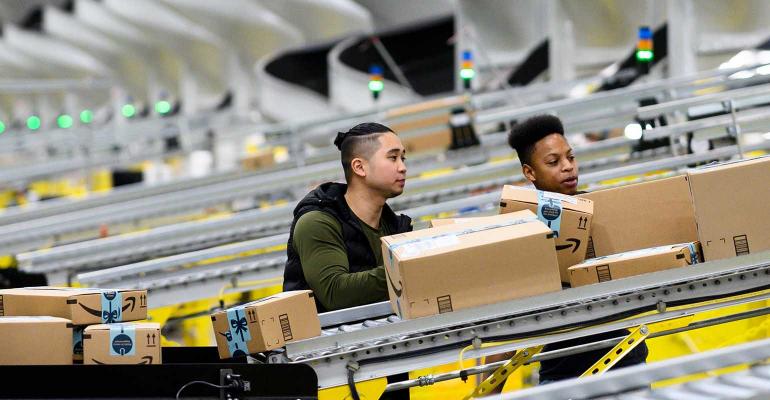After more than two years of pandemic-related disruptions the U.S. supply chain is facing new challenges, keeping availability tight in the industrial market.
Although most of the world has shed COVID-19 restrictions (China remains an exception), both domestic and global supply chains continue to be challenged by the looming threat of new variants and the war in Ukraine. These issues have manifested in high fuel costs and unpredictability in freight flows, as well as uncertainty about how and when the global economy will return to some level of stability, says Kelvin Sakai, senior director, supply chain consulting, with commercial real estate services firm CBRE.
In addition, a labor shortage, wage inflation impacting hourly workers and limited warehouse capacity continue to pose challenges for the U.S. logistics sector, according to Los Angeles-based Brewster Smith, senior vice president, supply chain solutions, with Colliers International.
Signs of improvement
To an extent, the availability and flow of goods domestically is beginning to normalize, Smith notes. Vessel backlogs at the ports of Los Angeles and Long Beach, for example, are down roughly 70 percent from January. However, Sakai stresses that the supply chain continues to face shocks in different areas at different times. So, while some industries and businesses are seeing things ease, others are not.
For example, the situation with the backlog at the ports could reverse its current course when the peak season arrives in a few months, especially if contract negotiations between the ports and dockworkers become contentious and fuel prices continue to rise, Sakai warns.
“Supply-chain volatility has, indeed, made life challenging for manufacturers, distributors and consumers, and real estate is just one component of this complex web spanning across the globe,” says Chicago-based Matt Walaszek, director of research with CBRE specializing in industrial and logistics.
Last year set a record for U.S. industrial demand and rent growth, with a momentum that has carried into 2022, he notes. In the first quarter of the year, industrial vacancy averaged just 3.1 percent nationally. Still, Walaszek notes that leasing activity is down slightly from last year—net absorption went down by 10.4 percent compared to the first quarter of 2021, CBRE found. This is partly a function of moderating demand, but it is also due to a comparison to extremely strong statistics in 2021, according to Walaszek. Overall, industrial net absorption in the first quarter was still above a 10-year average.
The pandemic has created what logistics practitioners call an “inventory bullwhip effect,” when products become scarce and organizations tend to panic and over-purchase merchandise to avoid future stock shortages, according to Smith. All of that pent-up demand in the spring/summer of 2021 created more inventory deliveries than U.S. ports and warehouses could handle and escalated demand for warehousing space, he says.
Today, as overall logistics costs rise, they are fueling additional demand for warehouse space as large companies increase inventory stock in anticipation of potential future price increases and supply chain disruptions, according to Walaszek. As a result, there is still a dire shortage of warehouse and distribution space in most U.S. markets, he says.
But while vacancy remains tight, the competition for space isn’t as fierce as it had been last year due to greater economic uncertainty.
“Occupiers are having to pay more to lease space, and finding available space has been extremely difficult in supply-constrained markets,” Walaszek says. (U.S. taking rents for industrial space have risen by 16 percent year-over-year, he notes. Asking rents, according to CBRE, have risen by 11.8 percent, to a record-breaking $8.94 per sq. ft.)
The rent growth has been especially strong around the country’s biggest ports, where industrial availability is very scarce, including the Port of Los Angeles, the Port of Long Beach and the Port of New York/New Jersey, according to Smith. In the Los Angeles market, for example, industrial vacancy is around 0.5 percent. Near the Port of New York/New Jersey it’s at 1.8 percent.
Walaszek’s data shows that rents at properties located in the Inland Empire rose by 74 percent year-over-year, in Los Angeles by 54 percent and in Orange County, Calif. by 39 percent.
In Smith’s view, it will take six to 18 months for the Fed’s interest rate hikes to start easing inflation and bring down fuel costs. When combined with new industrial deliveries, that should moderate growth in industrial rents.
Globally, however, “the supply-chain situation is much more precarious and difficult to predict,” he adds. “The military conflict can create geopolitical tensions in other parts of the world that disrupt supply chains, which is one reason we’re seeing a trend toward manufacturing re-shoring to the U.S., Mexico and South America.”





